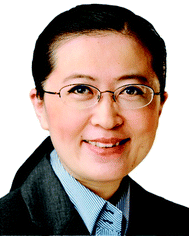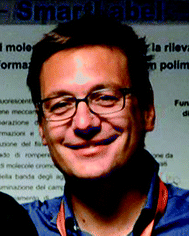Aggregation induced emission: a land of opportunities
Bin
Liu
 a,
Andrea
Pucci
a,
Andrea
Pucci
 b and
Thomas
Baumgartner
b and
Thomas
Baumgartner
 c
c
aDepartment of Chemical and Biomolecular Engineering, The National University of Singapore, Singapore 117585, Republic of Singapore. E-mail: cheliub@nus.edu.sg
bDepartment of Chemistry and Industrial Chemistry, University of Pisa, Via Giuseppe Moruzzi 13, 56124 Pisa, Italy. E-mail: andrea.pucci@unipi.it
cDepartment of Chemistry, York University, 4700 Keele Street, Toronto, ON M3J 1P3, Canada. E-mail: tbaumgar@yorku.ca
From sensing to lighting, fluorescence is one of the most studied photophysical processes due to its variety of possible applications. It has been found that sensing based on fluorescence is one of the most effective methods for the detection of analytes with high sensitivity and selectivity thanks to the tailored design of the emitting probes. Some fluorescent species have also been successfully used as solar concentrators to improve the efficiency of photovoltaics. Nevertheless, self-assembly of pure fluorophores usually suffers from emission quenching phenomena in the solid state, known as aggregation-caused quenching (ACQ), which strongly restricts the number of accessible fluorophores for practical applications. In this context, a revolutionary class of luminophores demonstrating fluorescence enhancement upon aggregation has drawn great attention for both fundamental science and practical applications. The concept of aggregation-induced emission (AIE), first coined in 2001 by Ben Zhong Tang, has significantly promoted bright luminescence in the aggregate and solid state. By enabling light emission in the solid state that is essential for their practical utility, AIE fluorophores demonstrate a striking impact in the fields of energy, optoelectronics, life science, and the environment.
The articles collected in this themed issue nicely illustrate the wide variety of research conducted under the broad banner of AIE. The research findings reported cover cutting-edge advances in molecular design and working mechanisms as well as new molecular and supramolecular platforms for sensing, imaging, optoelectronics, and energy solutions. New possibilities for improving the AIE characteristics and providing new functionalities arise when these molecules are embedded in complex matrices. As several contributions show, AIE materials have evolved considerably over the years, from molecules to polymers, including the discovery of novel AIE nuclei as well as even more intriguing applications. Of particular interest is the attention devoted to the exploration of multi-stimuli responsive as well as ultrasensitive AIE fluorophores in the area of fluorescence sensing and imaging.
In summary, we hope the outstanding contributions in this themed collection may give researchers the opportunity to discuss the current understanding of the AIE mechanism(s) and debate key challenges in this exciting research area for the development of new effective tools in sensing, energy saving and environmental protection. We would also like to thank the authors, reviewers and the editorial staff for their great support in making this special issue possible.
| This journal is © the Partner Organisations 2017 |



